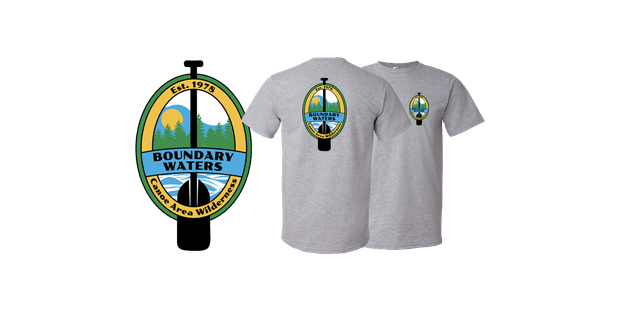All About the Canoe Paddle
I seem to put more emphasis on paying tribute to old canoe paddles then canoes. The walls in my living room, kitchen, office and even bathroom are adorned with canoe paddles. There are blades used on past trips, a few I've carved on my own, and some gifted to me over the years. My canoes, on the other hand, are stored on a rack in the backyard, belly up to the sun and showing off their ugly scars.
It All Adds Up
There's no question that your canoe is crucial to the well-being of your journey. But what about the paddle? That simple flattened stick of wood is what propels you; getting you from point A to point B. An average hour of paddling adds up to 1000 strokes, a full day will add up to over 8,000 strokes, and a week long canoe trip will have seen the blade push through the water close to 60,000 times. For that reason alone your canoe paddle deserves to be hung on the wall!
Paddle Materials
To some, it's the paddle that defines the canoeist more than the canoe, or at least defines what type of paddling they do. They can be made of plastic, fiberglass, aluminum or graphite. I prefer wood. It gives the blade more character. They're also light, well balanced, and when placed under stress, a wooden paddle bends and springs back. Spruce is good, hard maple even better. There's also soft cherry or stiff ash. Birch and cedar are common, and butternut shows the grain of the wood like no other.
~Get the BWCAW Tee~
With over 1,090,000 acres of wilderness area, the BWCAW is a paddler's paradise.
Bent or Straight?
Paddles can be bent or straight.
I like mine straight. I paddle the Canadian Shield the majority of time (the Northwoods as some paddlers label it). My canoe trips are made up of moderate size lakes, ponds and ever-twisting rivers. It's the Canadian stroke I use to propel the canoe forward, and a rounded, not overly wide Beaver Tail blade slices through the water with little effort... perfect for the "Northwoods." Most of the blade length is under the surface and less friction occurs. The rounded tip also enters the water more easily.
Beaver Tail vs. Otter Tail
The Beaver Tail makes a perfect bow paddle. For stern paddling and especially solo tripping I switch to the Otter Tail design. It's similar in design to that of the Beaver Tail but extended somewhat, has a narrower blade towards the tip, and has a shorter shaft length.
Of course, if there's more river then lake to paddle on, then I'll switch to a wider, squarer blade. It's not as efficient on the Canadian stroke, especially for the long term, but it pushes a lot more water when you're in a hurry to move the canoe.
Get A Grip
The grip on the paddle is almost as important as the blade that enters the water. For comfort, I like the shape to be oval and tapered slightly from the throat (where the blade reaches the shaft) to the grip. This makes the paddle far more comfortable and maximizes its strength than if had a rounded top. Just make sure that the long axis of the oval is perpendicular to the plane of the blade. If it's opposite to that, then the shaft will be very weak and most likely the paddle will break.
Kevin Callan is the author of 11 books. A regular keynote speaker at major North American canoeing and camping expos for over 20 years, he has received three National Magazine Awards and four film awards, including top award at the prestigious Waterwalker Film Festival. Callan lives in Peterborough, Ontario, birthplace of the modern-day canoe.
Related Articles
Have you checked the price of canoe paddles lately? Good ones cost over $100; great ones approach $300…
What's the differences between Greenland style paddles and the Euro blade? Pros and cons, what's better,…
Canoe Paddle Types Aside from personal grit, determination and sweat, it is your paddle that…
The backbone of any paddle - the one structure that ties every part of the paddle together, from the…







